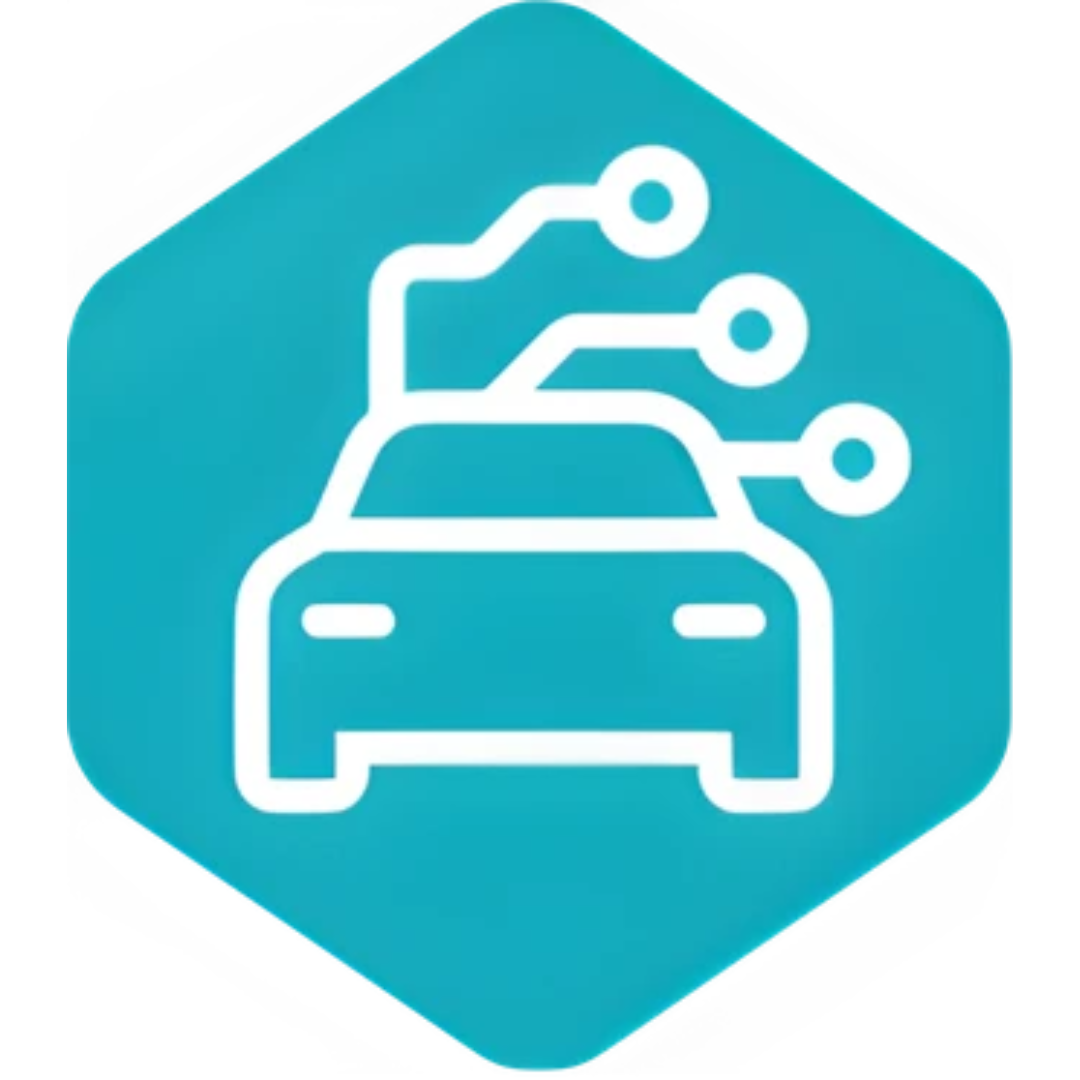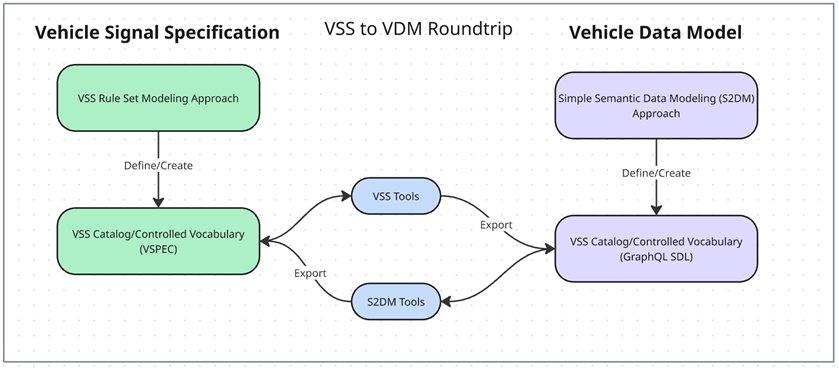COVESA Launches a New Vehicle Data Modeling Project

Share
COVESA’s Vehicle Signal Specification (VSS) is a mature and highly adopted approach for describing connected vehicle data in a simple and developer-friendly way. VSS has proven popular among consumers of vehicle data, such as fleet managers and insurance companies. It is also a target for integration into existing automotive standards and leveraged in several popular open source projects. So why would COVESA consider a new project for modeling vehicle data?
This blog intends to answer that question, at least at a high level, by introducing the Vehicle Data Model (VDM) Project. VDM is COVESA’s next step in data modeling maturity, built for the evolving needs of connected mobility, supporting multiple domains and use cases, both within and outside the vehicle.
VSS and VDM: Modeling Approaches
VSS and VDM consist of two main deliverables:
- Modeling Approach – Guidelines and tooling for authoring, validating, and exporting models.
- Catalog (controlled vocabulary) – Signals/properties/concepts and their relationships.
VDM builds on this proven deliverable structure, introducing a new modeling approach called Simple Semantic Data (S2DM) that builds on the principles of COVESA’s VSS — simplicity, accessibility, and community ownership — while improving flexibility, governance, interoperability, and using open web-friendly standards and technologies needed for the next 10 years.
VSS |
VDM |
|
Modeling Approach |
VSS Rule Set (VSPEC = YAML + COVESA Extensions) and Tools (vss-tools) – for authoring, validating, and exporting models | Simple Semantic Data Modeling (S2DM) using widely adopted established language (GraphQL Schema Definition Language (SDL) and Simple Knowledge Organization System (SKOS) |
Catalog (controlled vocabulary) |
Specification of the VSS Tree authored using the VSS Rule Set | Specification of the VSS Tree authored using S2DM |
Using the S2DM modeling approach, a parallel catalog/controlled vocabulary is created and maintained in GraphQL SDL format. Additionally, VSS and VDM catalogs can be generated, synchronized, and round-tripped from each other using either existing VSS Tools (e.g., VSPEC to GraphQL) or by using S2DM tools to produce a VSPEC catalog.

To be clear, the VSS ruleset and catalog are not going away. COVESA is committed to maintaining current adopter investment in the VSS structure and approach.
Like VSS, VDM formalizes the meaning of the data. But VDM also expands the relationships between vehicle data points. It is not limited to a single static tree but rather supports multiple hierarchies with a graph structure where cross-references are allowed. Its flexible structure allows you to connect individual pieces to support a wide range of applications and use cases.
The Business Case for VDM
From a business value perspective, there are several arguments for VDM, and these are some of the business reasons COVESA has launched the VDM project.
- VDM intends to address the industry’s need for a common, agreed-upon vehicle data model, ensuring consistency and interoperability across platforms, services, and companies.
- VDM reduces the manual effort of defining and maintaining complex vehicle data schemas by enabling the reuse and extension of models across programs and domains. Its flexibility enables broader applicability, supporting evolving use cases in connected, autonomous, and software-defined vehicles.
- VDM encourages cross-industry collaboration through a shared, open-source modeling approach, lowering integration costs and complexity.
- VDM supports feature-level thinking (e.g., seat configuration, ADAS functionality, etc.), not just signal-level data.
The Technical Makeup of VDM
The complete VDM concept exists in two projects, VDM and S2DM. The data models, represented in the VDM project, are built using COVESA guidelines as described in the Simplified Semantic Data Modeling (S2DM) approach. These include rules for modeling data of any domain (e.g., refrigerated trailers, motorcycles, EV charging stations, etc.). S2DM leverages established technologies and standards, such as GraphQL Schema Definition Language (SDL), to define structured, typed models that can be converted into other formats (e.g., JSON Schema, SHACL). Using the S2DM design, domain models can be extended with other standards such as the Simple Knowledge Organization System (SKOS) for flexible classification, enabling concepts to be organized in multiple ways (a.k.a. polyhierarchies). The adoption of the full VDM concept will include using the rules defined in the S2DM project to produce the data models in the VDM project.
How VDM and VSS Work Together
Think of VDM as a strategic evolution of VSS, extending its foundation without replacing it. VSS remains the simple, vehicle-centric vocabulary, ideal for vehicle use cases in its YAML format. VDM complements VSS with cross-domain modeling, richer metadata, and modern tooling, while ensuring concepts can be mapped between the two—protecting existing investments. For example, VSS defines what data exists (e.g., speed, door position), while VDM flexibly defines how data is structured, related, and interpreted across domains and systems (e.g., engine speed within PowerTrain, doors within Body, with left/right or front/rear relationships). VSS will continue to be fully supported for current and future adopters. VDM expands beyond VSS by offering flexible, cross-domain data modeling with reusable structures, clear definitions of capabilities, support for industries beyond automotive, and the intelligence to draw simple conclusions from data.
To Learn More
COVESA will continue to distribute informative documentation on the VDM approach in additional blogs and during the upcoming All Member Meeting in October. The projects reside in the COVESA GitHub, and experts are available to answer questions.
About the VDM Project
The Vehicle Data Model (VDM) is COVESA’s next step in data modeling maturity, built for the evolving needs of connected mobility, supporting multiple domains and use cases, both within and outside the vehicle. Learn more here.
GROUPS & PROJECTS
COVESA Groups and Projects are organizational structures for members to collaborate on the advancement of connected vehicle systems, software-defined vehicles, and mobility ecosystems.
Explore the array of groups and projects available to members. Learn more here.
